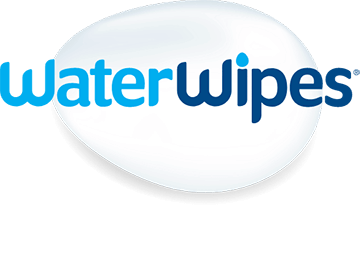Overview
Diaper rash is the most common skin condition amongst young infants, affecting 1 in every 4 babies.1 Also known as irritant diaper dermatitis, this is a complex skin condition that is marked by compromised epidermal barrier function occurring on the buttocks, perianal region, inner thighs, and abdomen.2 Expert GP, Dr Stephanie Ooi explores the unique structure of babies’ skin and how it can become susceptible to diaper rash, along with its causes and risk factors. Finally, she provides practical advice to support parents on the specific skin cleaning needs of babies during this time.
How common is diaper rash?
Seeing a baby experience diaper rash can cause significant distress among new parents but it’s important to remind them from the outset that this condition is very common amongst young infants. It is estimated that diaper rash affects up to 25% of diaper-wearing infants at any given time,1 and can effect babies of all ages.3 The incidence and severity of diaper rash has decreased since the introduction of super-absorbent disposable diapers and hypoallergenic skin care products.3-5
The unique structure of babies’ skin
The skin of infants and young babies is unique compared to that of older children and adults in terms of structure, composition and function. The epidermis in babies is 20% thinner and the stratum corneum is 30% thinner6 which increases susceptibility to permeability and dryness.7 However, in contrast to adults, infant skin has an increased proliferation rate,9 which supports the maturation of the skin barrier during the first year of life.
Baby skin is less firmly attached than mature skin and has a higher natural tendency to increase loss of water from inside the body through the epidermis, and reduce hydration of the top layer of the epidermis, reflecting a less effective skin barrier function.7,9 As the ratio between baby body surface to baby body weight is higher,7 topical agents are more readily absorbed and can therefore have a more pronounced effect on baby skin.
Anatomically, the skin of the diaper area features several folds and creases, presenting challenges in terms of both efficient cleansing and control of the skin environment, unless proven measures and materials are identified and carefully adapted on a routine basis.10
Did you know?
Skin barrier development in infants can remain incomplete until around 12 months,11 consistent with a ~3.5 X higher transepidermal water loss (TEWL) observed from neonatal skin relative to mature skin.12
Diaper rash – symptoms, causes and risk factors
These can be categorized as mild, moderate or severe, with mild presenting as slightly red irritated skin in the diaper area and severe characterized by raw, bleeding and open sores.13 Diaper rash is usually mild and can be dealt with at home.
Fast facts
It is not unusual for every child to have at least one episode of diaper rash by the time he or she is toilet-trained14
Diaper rash can range in severity: out of a given pool of patients, reportedly 58% have a slight rash, 34% a moderate rash and 8% a severe rash15,16
It is often during teething or weaning that a baby can become more prone to diaper rash17
It is well established in scientific literature that exposure to moisture and occlusion in the diaper area can contribute to local irritation, reduced skin resilience, impeded barrier function and ultimately dermatitis.18 When the skin becomes hydrated, it is especially vulnerable to mechanical damage and chafing due to friction from the diaper, allowing biologic and chemical irritants to penetrate the stratum corneum.10,20 These irritants, namely components of urine and fecal enzymes can lead to the build-up of ammonia from the urinary urea, resulting in an elevation of the baby’s skin pH.19 Consequently, this increased skin pH triggers fecal proteases and lipases, both regarded as the key contributors in the development of diaper rash.20
There are limited studies examining the risk factors associated with diaper rash among infants. One study reported that the prevalence of diaper rash was associated with infant maturity, infant formula feeding, and the presence and level of fecal C. albicans.16 In another study, recurrent diaper rash was shown to be associated with increasing infant age, lack of barrier cream use and frequency of diaper changes, whereas current diaper rash has been shown to be associated with oral thrush (candidiasis), previous episodes of diaper rash and frequency of diaper changes.21
Antibiotic use and diarrhea are also considered risk factors in the development of diaper rash.19,22,23 Lastly, breastfed infants appear to be less susceptible to diaper rash as feces have a lower pH. The bile salts in the stools encourage the activity of fecal enzymes, compounding the effect.14
Preparing parents for diaper rash
If parents are ever worried about diaper rash please remind them that their nurses and GP’s are there for them and want to help. Here are a few things parents can do to try and prevent diaper rash:
Looking after the diaper area
Gentle and effective cleansing of the diaper area can halt the diaper rash cycle in babies through restoring the skin dryness, eliminating irritants and balancing skin pH levels.
NICE has set out a few key steps in managing diaper rash for parents and caregivers to follow:24
Air - Leave diapers off for as long as possible to help skin drying of the diaper area
Change diapers frequently - Clean the skin and change the diaper every 3–4 hours, or as soon as possible after wetting or soiling, to reduce skin exposure to urine and feces. Use water, or fragrance-free and alcohol-free baby wipes in order to protect the skin barrier.25 Apply a barrier cream (type and application depends on the severity of symptoms).
Not necessary to bathe daily - Avoid excessive bathing (such as more than twice a day) which may dry the skin excessively. Pat dry after cleaning. Avoid soap, bubble bath, lotions, talcum powder, or topical antibiotics which can have an irritant effect and destabilise the skin pH.26 If the diaper rash does not resolve after following these steps, a referral to GP should be considered.20
Practicing good hygiene is also important
Parents should be equipped with the necessary education on proper hygiene techniques:
Washing hands before and after each diaper change to prevent contamination20
Wiping should be done from the front to the back20
Keeping babies’ hands clean, relating to their hand-to-mouth behaviors, can help reduce or prevent oral transmission of pathogens. Parents should pay particular attention to skin on the facial area, which may be irritated easily by milk, food and saliva2
The role of wipes in diaper rash
While cloth wipes or cotton wool and water have traditionally been considered the gold standard for cleaning baby’s diaper area, recent studies have consistently demonstrated across a range of clinical settings how some baby wipes provide effective cleaning while also being tolerable and mild, supporting their use even on delicate neonatal skin.20,27-31 In fact, it has been shown that baby wipes are associated with no increase in skin irritation where commercially available alcohol- and fragrance-free baby wipes were used, compared with cloth or cotton wool and water.25 Additionally, parents reported that baby wipes were more convenient to use than cotton wool and water.28,32
WaterWipes are gentle on the most sensitive skin
Containing just two ingredients, 99.9% high purity water and 0.1% fruit extract, WaterWipes are so gentle on skin they can be used on premature babies.
WaterWipes are manufactured under clean room conditions using a unique purifying technology. The water in WaterWipes undergoes a 7-stage water purification process which results in an ultra-pure wipe which delivers a soft feel on the skin. This process makes the water purer than cooled boiled water. This purifying technology produces a unique product that effectively cleanses the skin, without the need for additional unnecessary cleansing ingredients.
The fruit extract contains naturally occurring polyphenols and vitamin C which act as a gentle skin conditioner and cleanser.33
WaterWipes are purer than cotton wool and water
Based on a review of the scientific literature by its independent team of experts, the Skin Health Alliance concluded that WaterWipes baby wipes are purer than using cotton wool and water.
WaterWipes are recommended by nurses and other healthcare professionals worldwide and have become the preferred wipe in some NICU's throughout the world.

